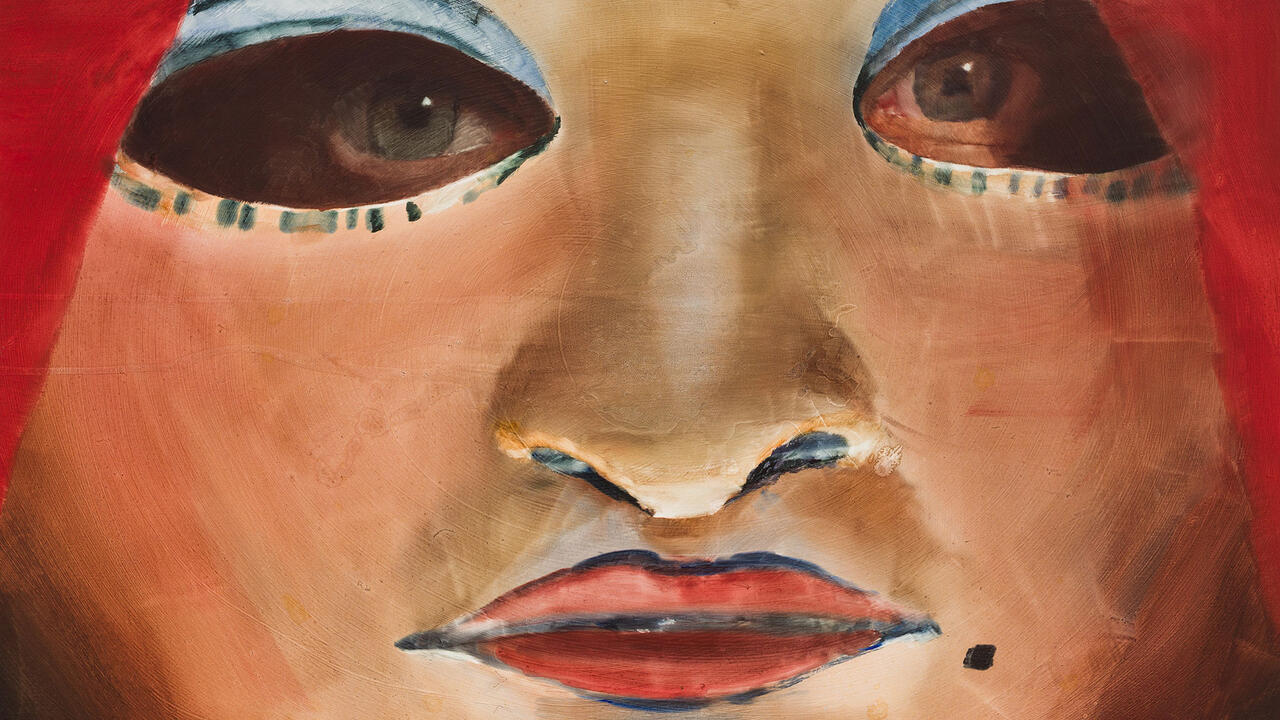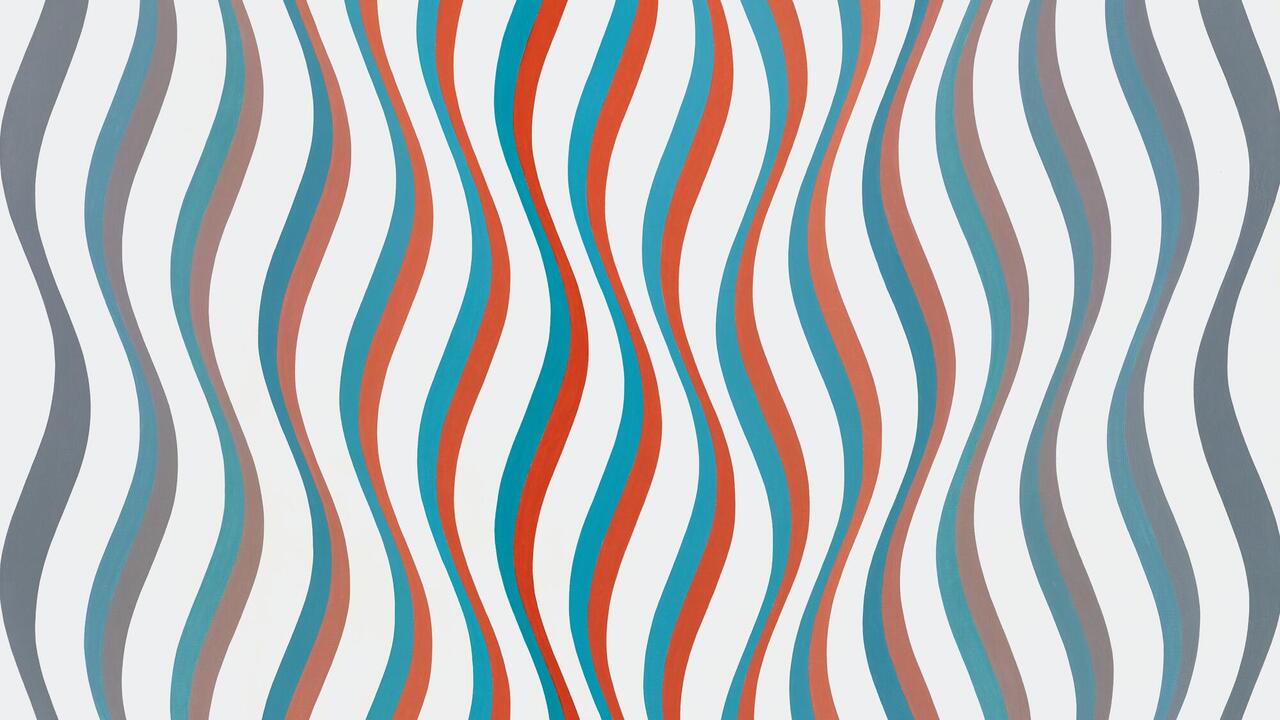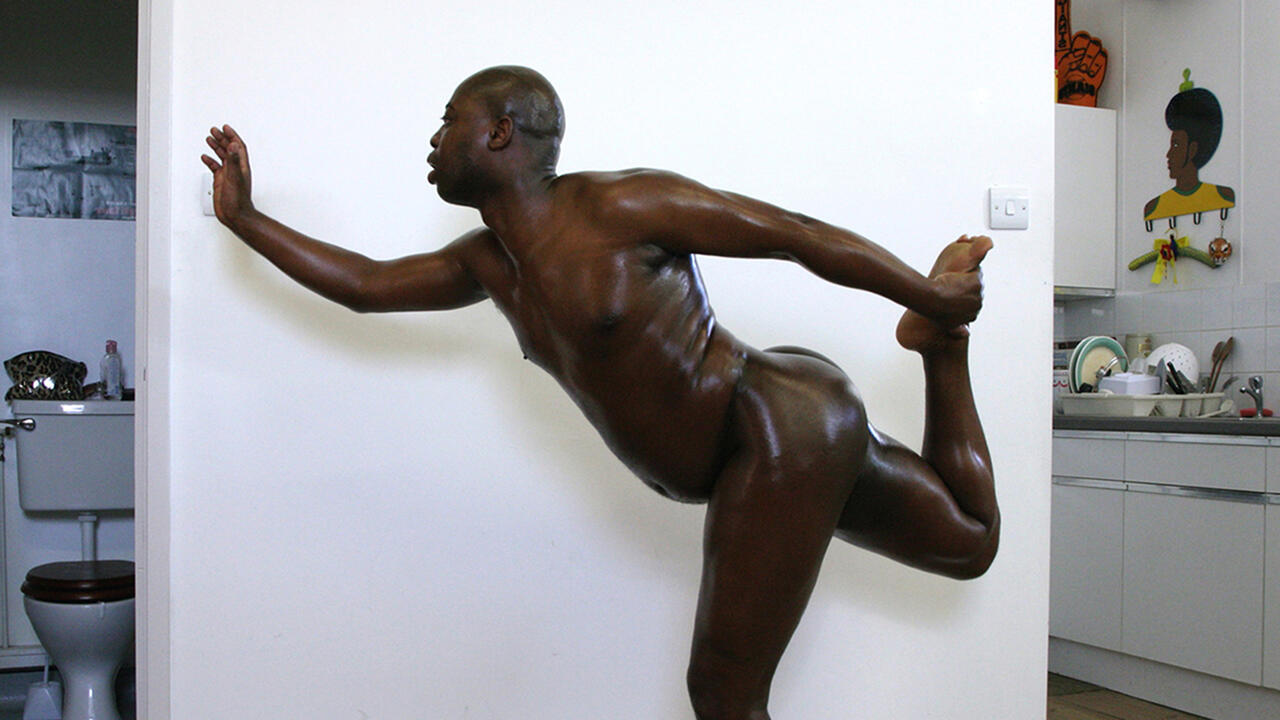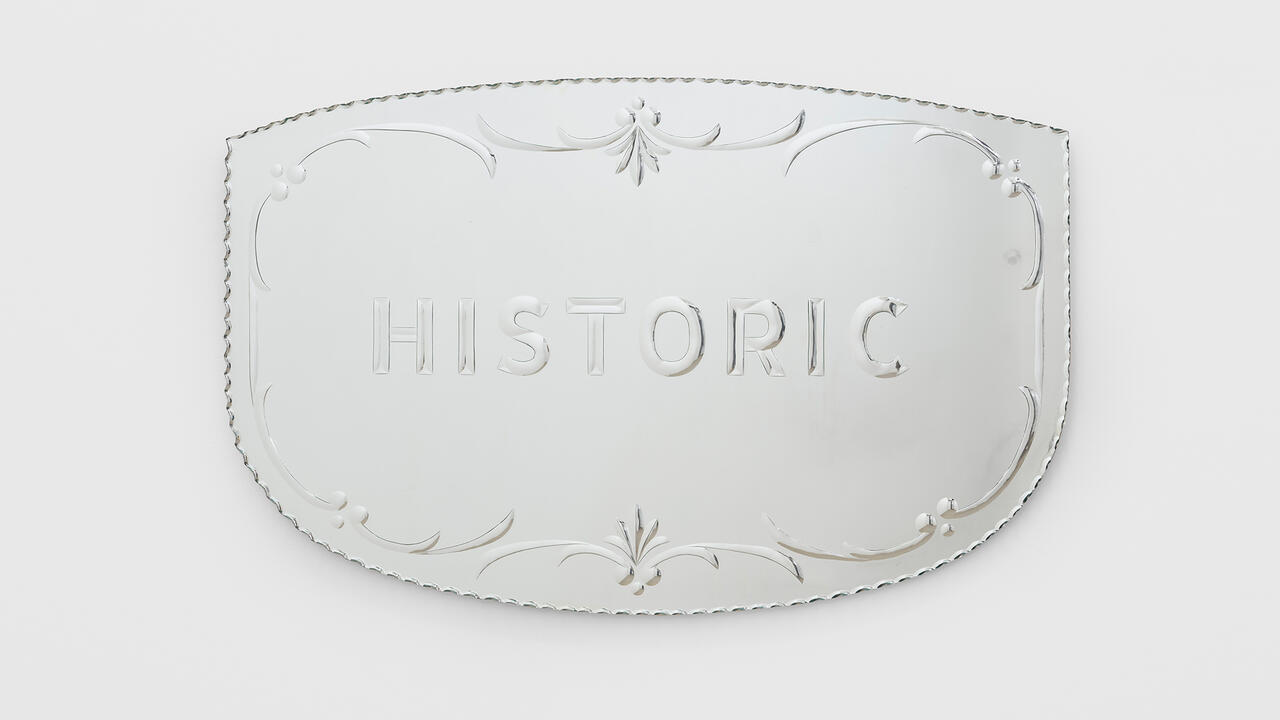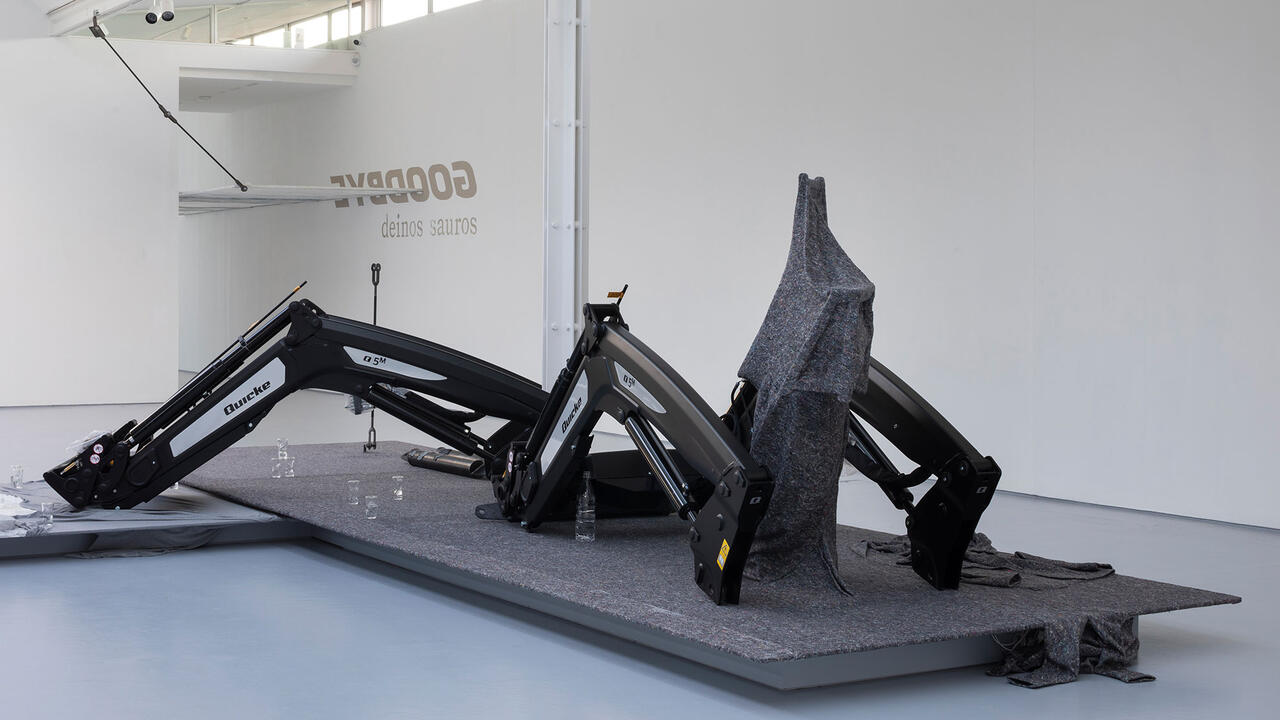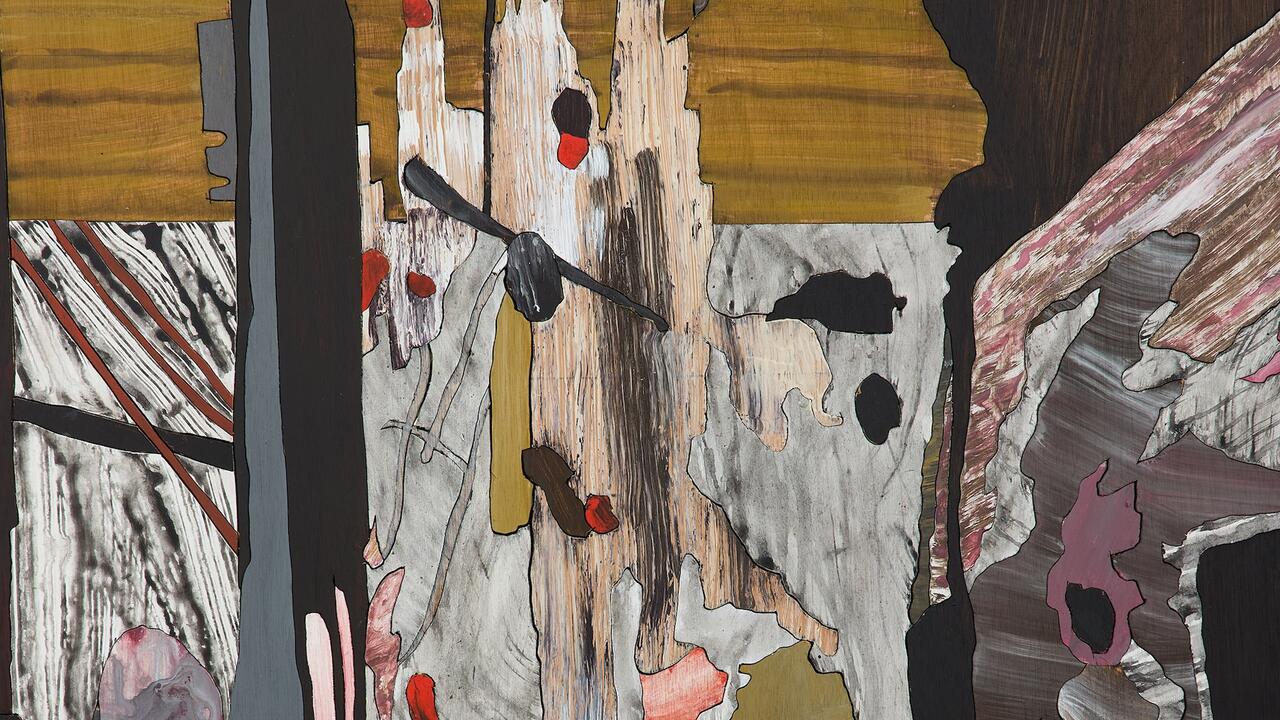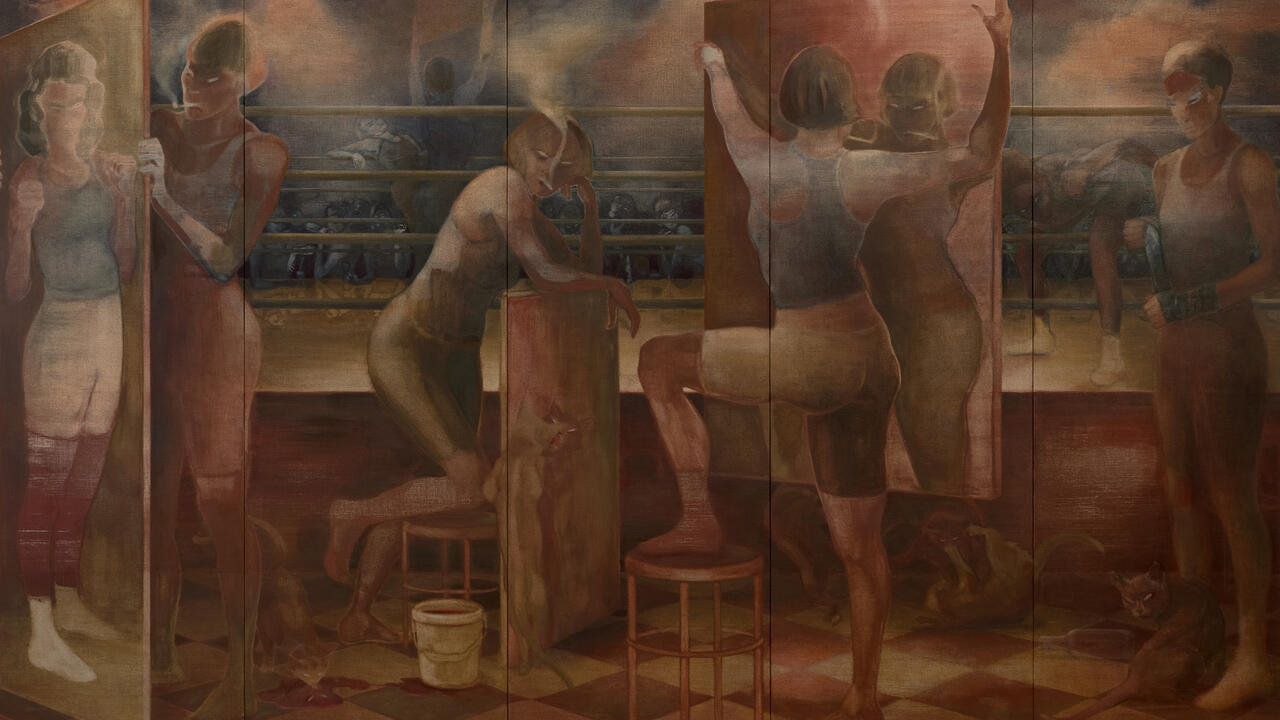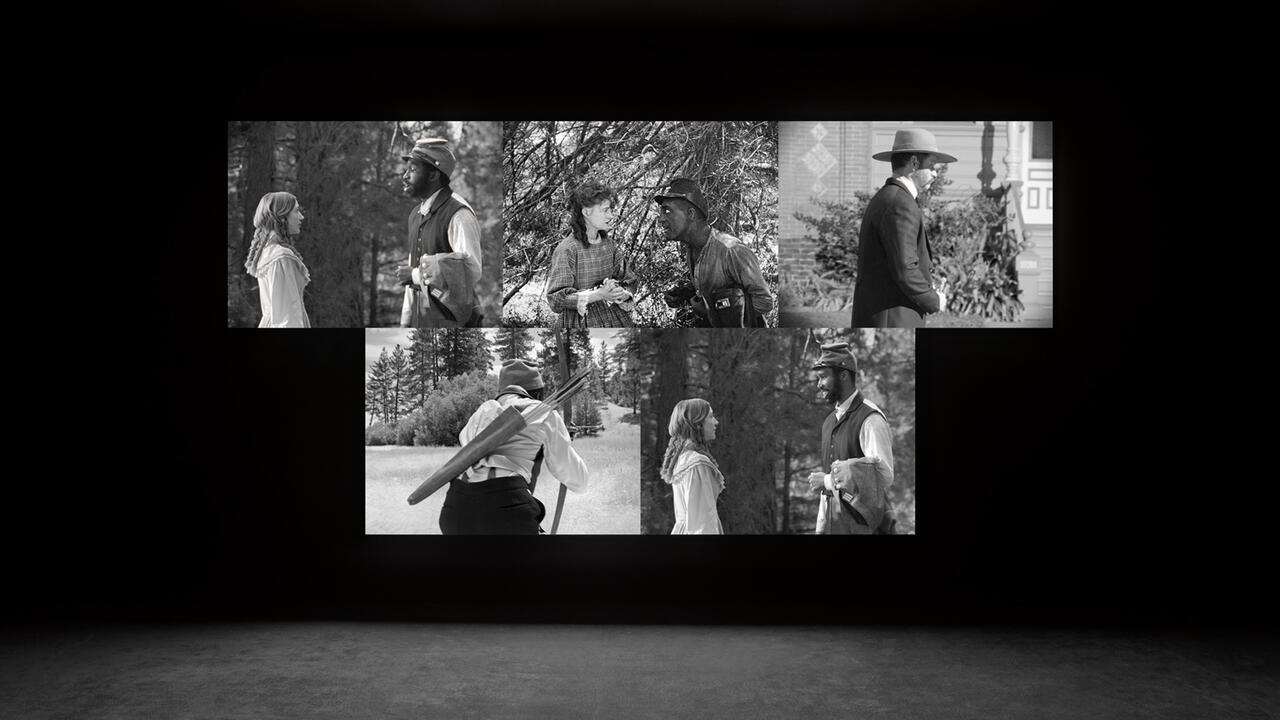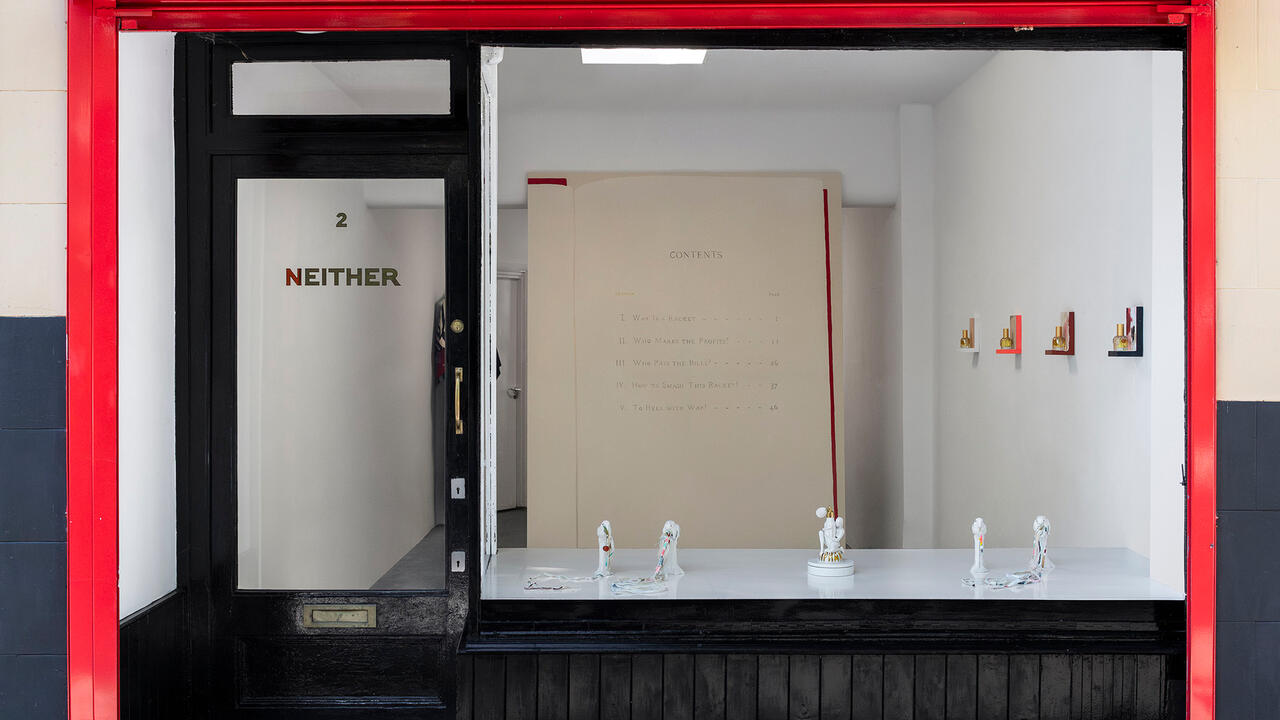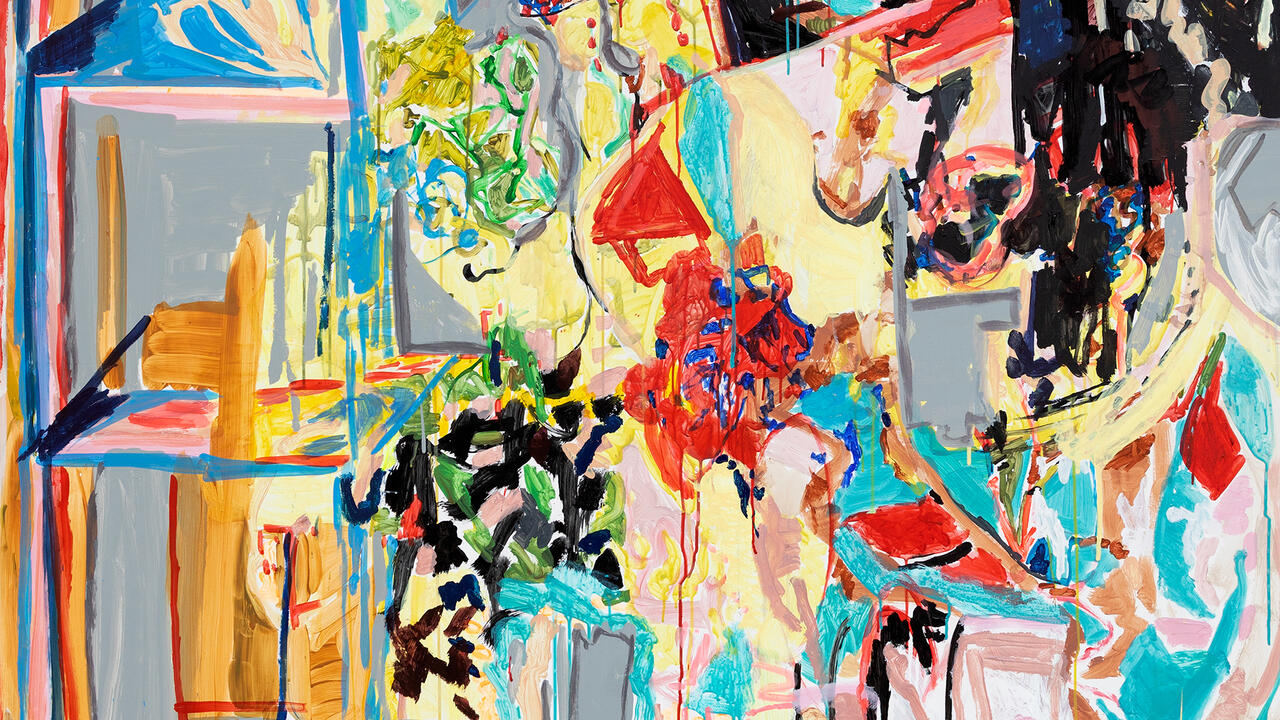Leo Robinson Is an Alchemist
The Glasgow-based polymath’s solo show at Chapter, Cardiff, is rigorously informed by ancient and mediaeval religions and spiritual movements
The Glasgow-based polymath’s solo show at Chapter, Cardiff, is rigorously informed by ancient and mediaeval religions and spiritual movements

Claims of artists as ‘world-makers’ seem to be everywhere. Unfortunately, such curatorial hubris often has the opposite of its intended effect, diluting a viewer’s capacity to register an artist’s ambitions on their own terms. However, Glasgow-based polymath Leo Robinson’s solo show at Chapter, ‘The Infinity Card’, does a rare thing. By privileging speculation as both method and principle, the work is full of sincere and gentle invitations to contemplate environments other than this one, and conditions other than these. It is neither forceful nor passive in its vision of how they might come into being. Throughout the suite of predominantly sculptural and collage works, which occupy Chapter’s entire main gallery space, Robinson weaves dense webs of allusion and appropriation from a deep pool of found imagery and symbolic motifs, relating largely to spiritual and religious phenomena. Robinson is an alchemist, who conjures dream states and irrealities through labyrinthine, cosmological assemblages. To borrow the phrasing of Joseph Morgan Schofield’s essential accompanying text, they have the character of ‘future remains’, confusing or problematizing our notions of ‘what tense we are in’.

The exhibition is rigorously informed by research into a vast array of ancient and medieval religions and spiritual movements, most explicitly by the divinatory principles of I-Ching. Some works are visibly indebted to the altars of the Afro-Cuban diasporic religion Santería, whereas a set of board games invented by the artist – presented without instructions – elaborates on the historical and spiritual significance of Moksha Patam, the medieval-Indian precursor to Snakes and Ladders. Elsewhere, screengrabs of TikTok dances popularized by Black teenagers appear alongside images of jazz musicians and (seemingly Robinson’s own) propositional musical scores.

The exhibition’s unique disorientations compel the viewer to navigate the severe space of the gallery itself as a kind of game, albeit one in which neither the rules nor the objectives are exactly legible. (The titular infinity card tellingly ‘represents breaking through the confines of value-judgement’.) While meditative practices undergird Robinson’s work, ‘The Infinity Card’, at times, seems full-to-bursting with visual and aural stimuli. Across its 26 works, all new, displayed through five, semi-discrete spaces, the remixing of temporal registers and culturally specific markers emerge as the exhibition’s dominant mode. A single work might encompass half a dozen appropriated images, hand-scribbled aphorisms and ornate sculptural constructions, with each individual element negotiating its own intricate arrangements of collaged and distorted materials. There is a lot of exhibition here: so much that its visual density might overwhelm or alienate were its juxtapositions less elegant, less insistently surprising. It is difficult to avoid describing Robinson’s work using musical vocabularies – the sample, remix, mash-up – which belies his equally rich output as a musician. One sound piece is featured here, Harp for Nine Dyads (2022), in the exhibition’s opening room, its rhythms bleeding into the rest of the space, a kind of spiritual guide.

In drawing from the visual and spiritual grammars of movements or ideologies which make new sense of ancient narratives or symbols for their own present tense, Robinson suggests the capacity of a particular kind of art-making – endlessly propositional and intuitive, each fragment an opening into a new lexicon of possibility – to conjure meaningful new frameworks for relating to the times and places in which we (seek to) exist. The work’s occasional opacity only enriches our engagement with its navigation of the nuanced and often perplexing processes of identification and enlightenment that religious and spiritual imagery make possible. Images of people mid-movement recur: one small photograph, easily unnoticed, shows Robinson himself dancing, entranced: perhaps grasping for another world, perhaps getting there.
Leo Robinson’s ‘The Infinity Card’ is at Chapter, Cardiff, until 16 April
Main image: Leo Robinson, Nine Dyads, watercolour, collage, pen, Sumi ink, pencil, tape on paper and mountboard, 2021. Courtesy: the artist and Tiwani Contemporary









